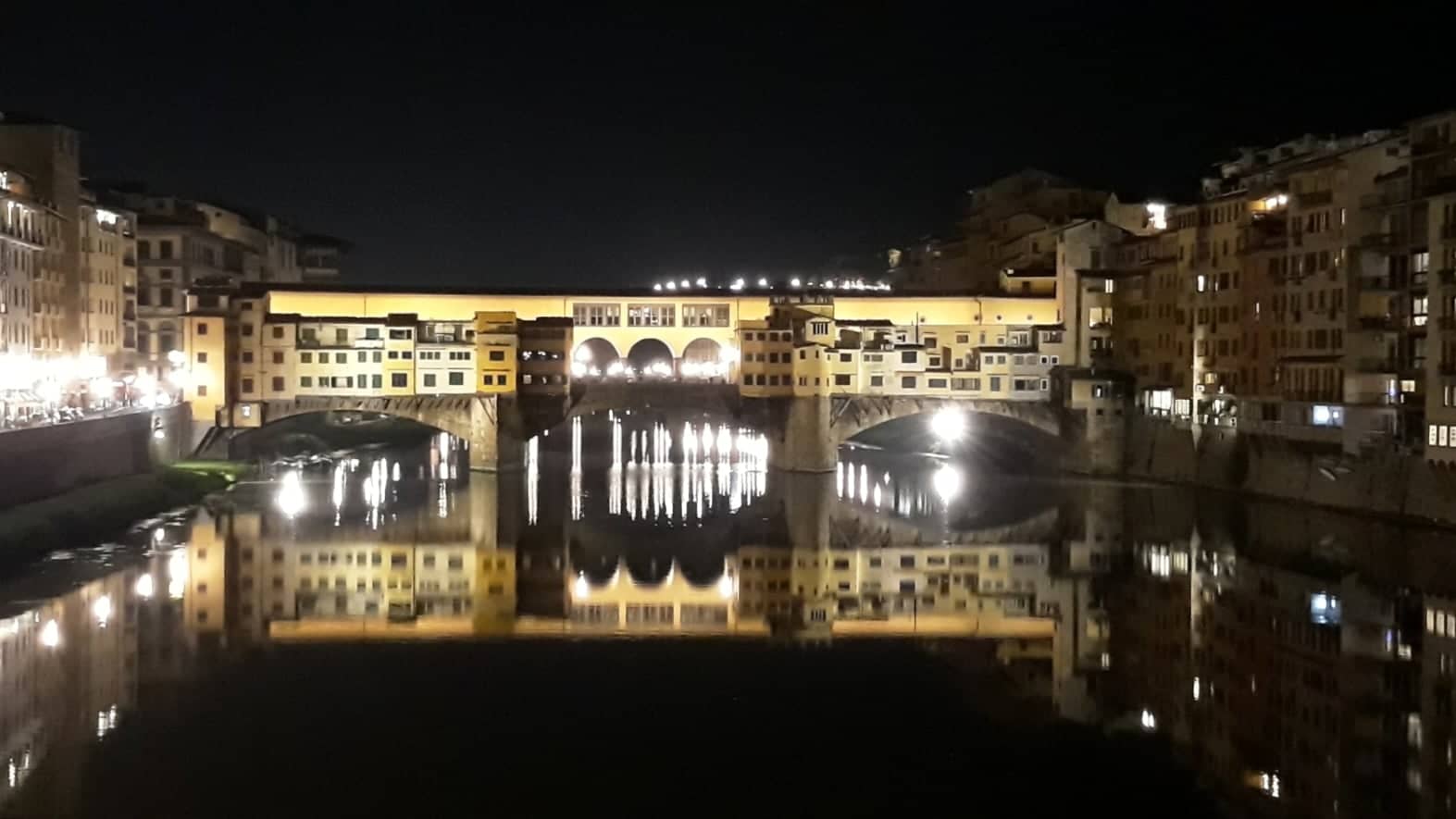For those who are not familiar with the Italian language, “Ponte Vecchio” is not an exotic name for a bridge. In “Firenze” or Florence, it refers simply to the Old Bridge. A symbol of Florence, a city that the Romans called Fiorentina in its founding and which in Latin means flowering / flower in bloom.

It is at the narrowest point of the Arno River that the bridge is located, this for obvious reasons. However, the constant floods and overflows of the Arno River destroyed the bridges that replaced or rebuilt following these disasters. Many believe that the crossing or bridge over the Arno river dates back to 996 and was actually built by the Romans.


Originally, the medieval stone arch over the Arno River, the old bridge we now know, was single-level, being rebuilt again in 1345. It continued to house merchants, mostly butchers. However, in the 16th century, the Medici ordered the architect Giorgio Vasari, the construction of a second level for the bridge. The purpose was to connect the Pitti Palace of the Medici, located on one side of the Arno River, with the “Palazzo Vecchio” (Old Palace), seat of the government at that time and located on the opposite side of the river.

To complete the project it was necessary to build other bridges and corridors to connect the buildings desired by the Medici. This became known as the Vasari Corridor. As a result of the project, the butchersof the “Ponte Vecchio” were expelled, being replaced by goldsmiths and jewelers. The latter made the Medici appreciate the bridge much more when making strolling through its second level.

Today one can find other bridges that cross the Arno River, however, it is still the “Ponte Vecchio” that grabs the attention of all who visit. Although the Medici no longer walk through the corridors of the second floor, today perhaps more than ever, one finds jeweler, some older than others.


In 1900, to commemorate the fourth century of the birth of the sculptor and goldsmith Benvenuto Cellini, a Florentine bust was unveiled in the center of the portion of the bridge.


